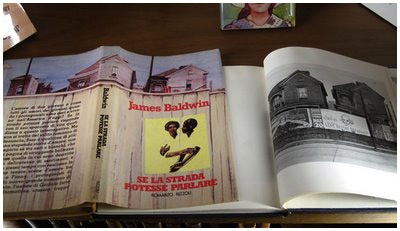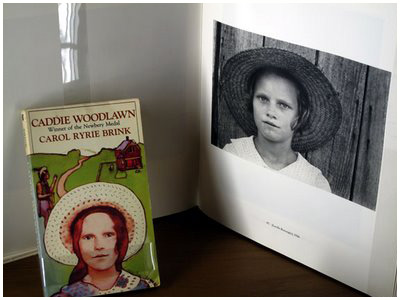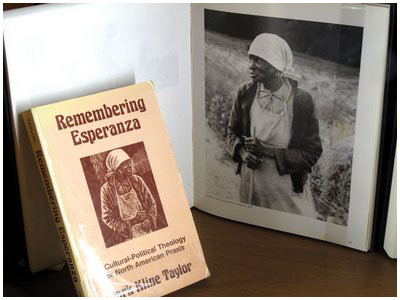Display Case 4 (Evans, Lange)
The Italian edition of James Baldwin's If Beale Street could Talk uses Walker Evans' Atlanta, Georgia, 1936 as the source for its cover artwork. The influence may be seen primarily in the middle and right-hand houses. In Evans' original, the poster on the fence is an advertisement for the film Love Before Breakfast, on which someone has painted a black eye on the portrait of its star, Carol Lombard.
Title: Se La Strada Potesse Parlare (If Beale Street Could Talk)
Author: James Baldwin
Publisher: Rizolli 1979
Designer / Illustrator: Paolo Guidotti.
|
 |
 |
Another Walker Evans image, also from 1936, has been referenced for the cover of Caddie Woodlawn, by Carol Ryrie Brink. Evans' portrait of Lucille Burroughs, albeit stylized and redone in pigment, is the model for Brinks' title character.
Title: Caddie Woodlawn
Author: Carol Ryrie Brink
Publisher: Collier Books 1970
Designer / Illustrator: J. McMullan.
|
Sometimes a work of art by one artist is appropriated by another artist and remade into a new work of art. An obvious example might be Andy Warhol's use of DaVinci's Mona Lisa. In that case it is a matter of quotation; Warhol challenges our preconceptions about the nature of 'high' art and 'low' art.
The cover of Mark Kline Taylor's Remembering Esperanza presents some similarities. In 1983, Elizabeth Catlett (an important artist in her own right) took one of Dorothea Lange's better-known photographs, Ex-Slave With a Long Memory, Alabama 1938 and hand-copied it as a linocut, flipping it horizontally in the process. The 'new' image was subsequently exhibited and published, under Catlett's name, with the title The Survivor. Seven years pass, and this new translation finds its way onto the cover of Taylor's book, now reduced in size, compromised in detail, shifted in color; that is, not quite the same work that would be found on gallery or museum walls. Since Lange's 'original' was made while she was working for the Farm Security Administration, it is 'owned' by the Library of Congress, and therefore free of most copyright restrictions. Catlett may use the image as she pleases. Her interpretation of Ex-Slave may be seen as transformative and skillful, and it can even be argued that, as an African-American, Catlett may claim a symbolic form of 'ownership' to a picture that references slavery. In transforming the image, Catlett has also made it her own from a legal standpoint; the picture's caption in the book informs us that it appears 'courtesy of Hancraft Studios. All Rights Reserved'.
While this may pose an ethical dilemma for some, in terms of this exhibition it is not a problem at all; rather, it is an example, in a didactic sense, of issues that may surface when an image undergoes the process of translation (in this case, more than one translation) from 'original' to book cover.
|

Title: Remembering Esperanza
Author: Mark Kline Taylor
Publisher: Orbis Books 1990
Designer / Illustrator: Alicia Zoda.
|
